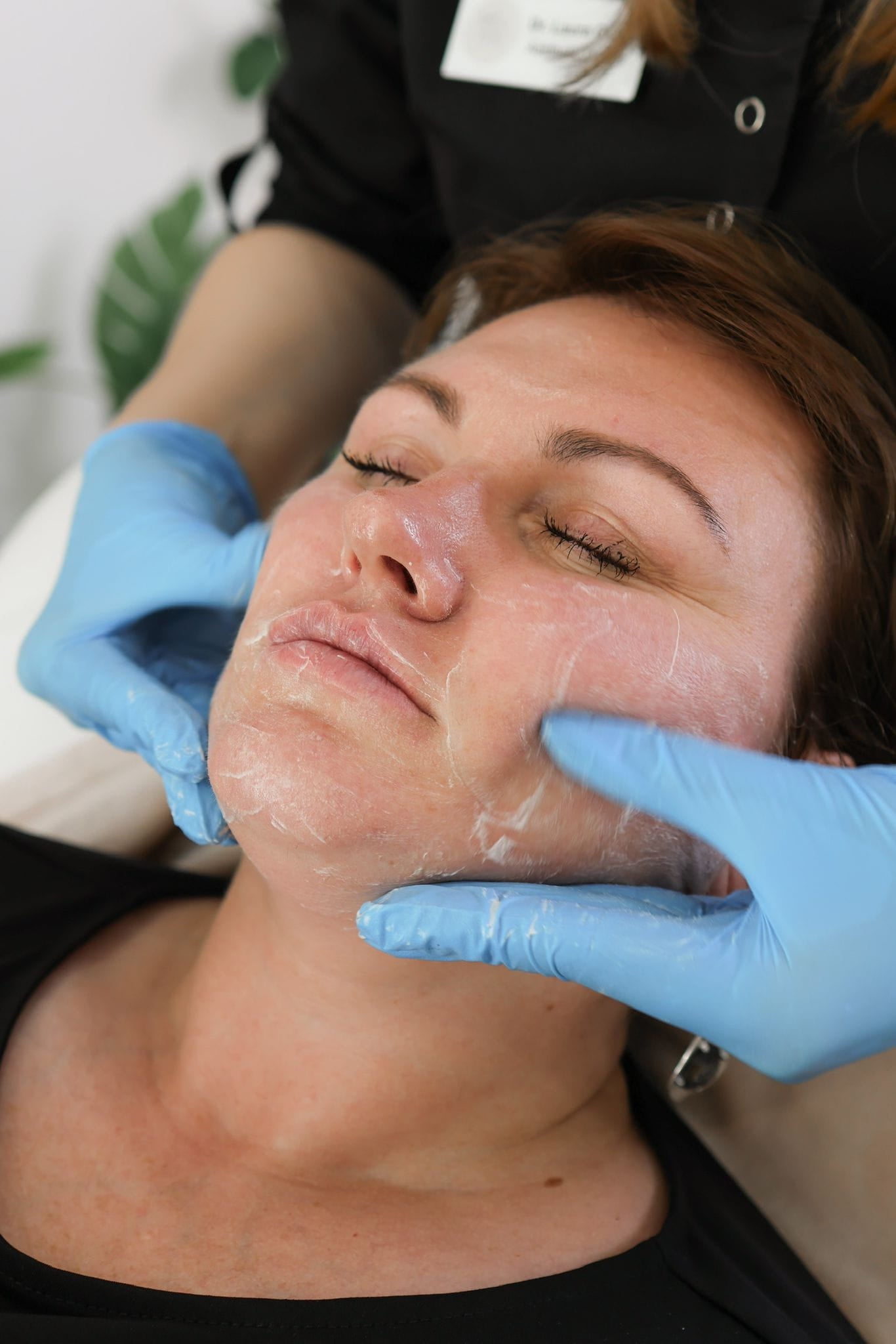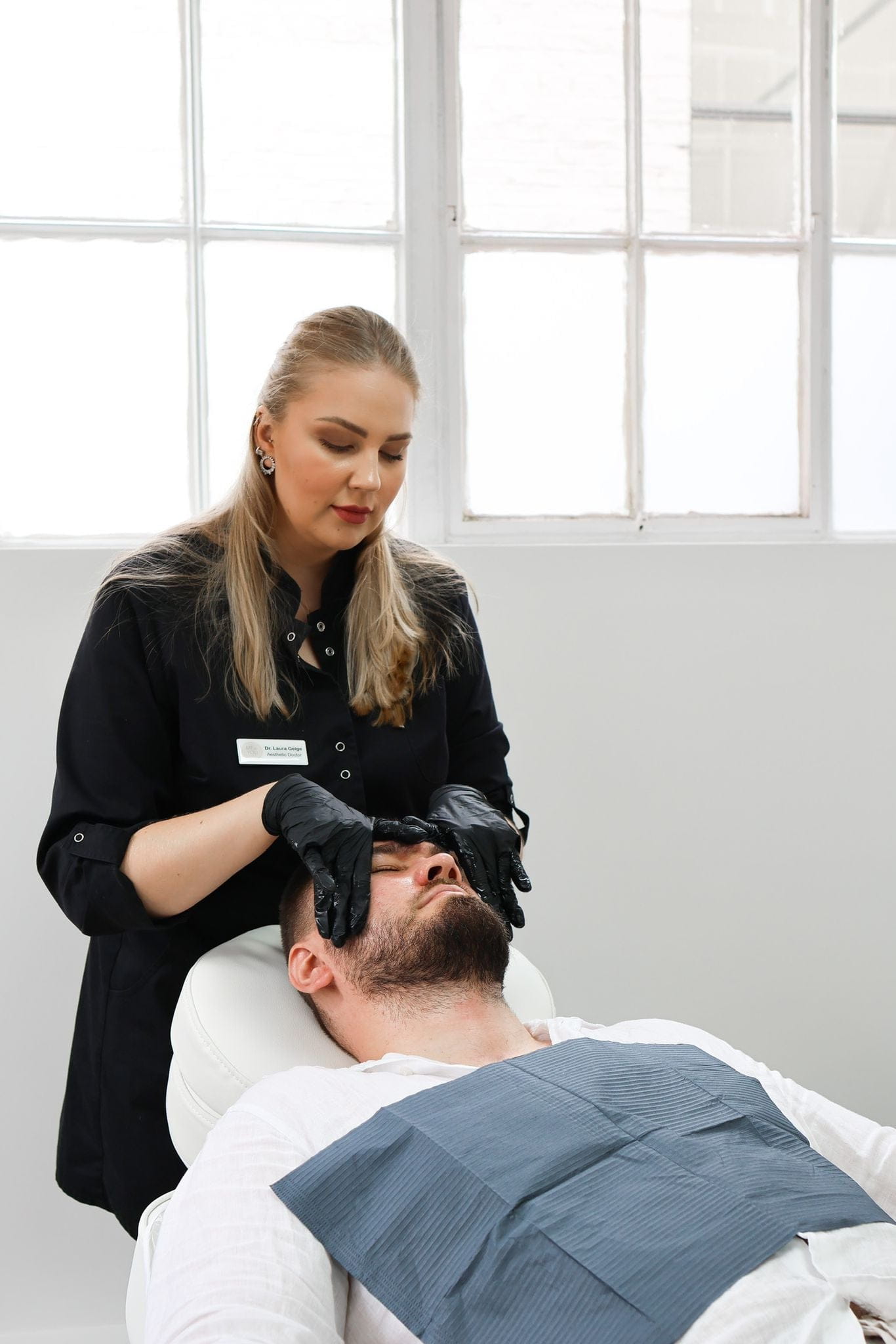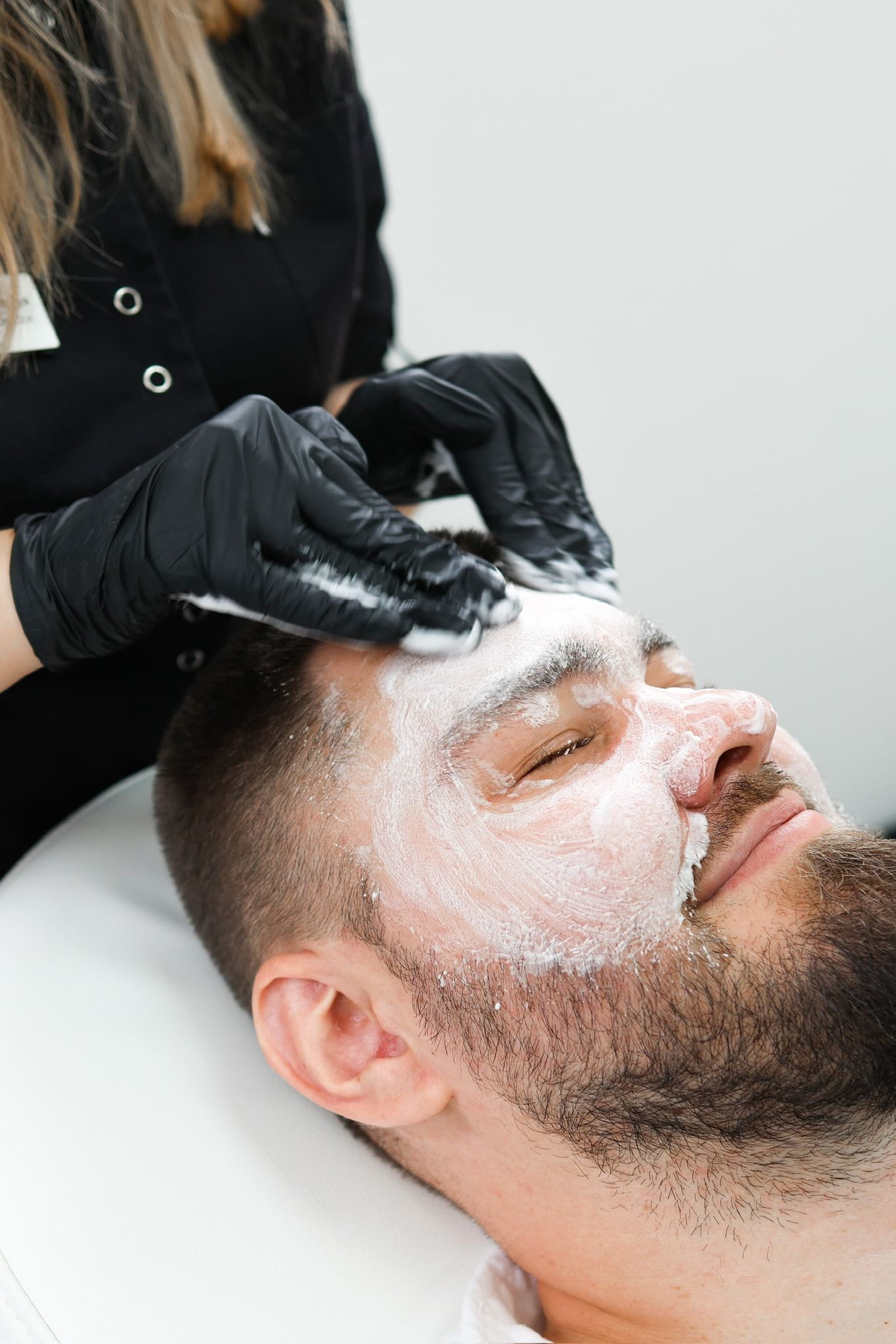Effectiveness of Cosmelan
Cosmelan, a popular depigmentation peel treatment, has gained significant attention for its potential to effectively address hyperpigmentation concerns. This potent solution utilizes a blend of ingredients that target melanin production, aiming to reduce the appearance of dark spots, sun damage, and other pigmentation irregularities.
Clinical Trials and Studies
The effectiveness of Cosmelan in treating hyperpigmentation is supported by various clinical trials and studies. These investigations have demonstrated its efficacy in reducing melanin production, leading to a significant lightening of skin discoloration. Notably, one study published in the journal “Dermato-Endocrinology” found that Cosmelan treatment resulted in a substantial improvement in hyperpigmentation scores after six months of follow-up.
Another study, conducted by the Spanish Society of Dermatology and Venereology, reported positive outcomes with Cosmelan for melasma treatment. Participants experienced a noticeable reduction in pigmentation and an overall improvement in skin tone following the treatment regimen.
While these studies provide encouraging evidence, it is essential to recognize that individual responses to Cosmelan may vary depending on factors such as skin type, severity of hyperpigmentation, and adherence to post-treatment care instructions. Consulting with a qualified dermatologist is crucial for determining if Cosmelan is an appropriate treatment option and to receive personalized guidance.
Real Patient Testimonials and Reviews
Real patient testimonials and reviews offer valuable insights into the effectiveness of Cosmelan in treating hyperpigmentation.
- Many patients report significant improvement in the appearance of their skin after undergoing Cosmelan treatment.
- They often describe a noticeable reduction in the size, intensity, and overall visibility of dark spots, sun damage, and melasma.
- Some individuals share experiences of achieving a more even and brighter complexion following treatment.
While these positive experiences are encouraging, it is important to note that individual results may vary.
Long-term Results and Maintenance

Cosmelan offers long-term benefits for hyperpigmentation when proper post-treatment care is followed. Results typically begin to manifest within a few weeks after the initial treatment and continue to improve over several months.
- Regular sun protection with broad-spectrum sunscreen (SPF 30 or higher) is essential for maintaining results and preventing the return of pigmentation.
- Avoiding excessive sun exposure, especially during peak hours, helps prevent further darkening of existing pigmentation or the formation of new spots.
- Some individuals may require occasional maintenance treatments to address any remaining pigment or prevent recurrence.
Ingredients and Mechanism of Action
Cosmelan’s efficacy stems from its unique blend of ingredients, which work synergistically to inhibit melanin production and reduce hyperpigmentation. The formulation typically includes hydroquinone, kojic acid, and azelaic acid, each contributing specific mechanisms of action to target different stages of pigmentation.
Active Ingredients in Cosmelan
Hydroquinone, a potent tyrosinase inhibitor, acts at the initial stage of melanin formation by blocking the enzyme responsible for melanin production. Kojic acid also inhibits tyrosinase activity and possesses antioxidant properties, protecting skin cells from damage that can contribute to hyperpigmentation. Azelaic acid, another key ingredient, exhibits anti-inflammatory and depigmenting effects by reducing inflammation associated with pigmentation and inhibiting melanosome transfer.
How Cosmelan Addresses Hyperpigmentation
Cosmelan’s effectiveness in addressing hyperpigmentation is attributed to its unique formulation of ingredients that work together to reduce melanin production. Hydroquinone, a key component, acts as a tyrosinase inhibitor, blocking the enzyme responsible for melanin synthesis at its earliest stage. Kojic acid complements hydroquinone by also inhibiting tyrosinase activity and offering antioxidant protection against damage that can exacerbate pigmentation issues.
Azelaic acid further contributes to Cosmelan’s depigmenting action by exerting anti-inflammatory effects, reducing inflammation often linked with hyperpigmentation, and inhibiting the transfer of melanosomes, pigment-containing organelles, to skin cells.
Potential Side Effects and Risks
While Cosmelan offers promising results for treating hyperpigmentation, it is essential to be aware of potential side effects and risks. These may include redness, peeling, itching, and sensitivity to sunlight. In rare cases, more serious complications such as hypopigmentation (loss of skin color) or allergic reactions can occur.
Common Side Effects
Potential side effects associated with Cosmelan treatment can vary in severity from person to person.
Common side effects typically include redness, peeling, itching, and sensitivity to sunlight. These usually appear within a few days of the treatment and subside gradually over a week or two.
It is important to note that some individuals may experience more severe side effects, such as blistering or prolonged inflammation. In rare cases, there’s a risk of hypopigmentation (loss of skin color) or allergic reactions. It is crucial to consult with a qualified dermatologist before undergoing Cosmelan treatment to assess individual risk factors and ensure appropriate monitoring throughout the process.

Serious Side Effects and Precautions
While Cosmelan offers promising results for treating hyperpigmentation, it is essential to be aware of potential side effects and risks. These may include redness, peeling, itching, and sensitivity to sunlight. In rare cases, more serious complications such as hypopigmentation (loss of skin color) or allergic reactions can occur.
Potential side effects associated with Cosmelan treatment can vary in severity from person to person.
- Common side effects typically include redness, peeling, itching, and sensitivity to sunlight. These usually appear within a few days of the treatment and subside gradually over a week or two.
- Some individuals may experience more severe side effects, such as blistering or prolonged inflammation.
- In rare cases, there’s a risk of hypopigmentation (loss of skin color) or allergic reactions.
It is crucial to consult with a qualified dermatologist before undergoing Cosmelan treatment to assess individual risk factors and ensure appropriate monitoring throughout the process.
To minimize potential risks and maximize the chances of a successful outcome, it is essential to follow these precautions:
- Consult with a qualified dermatologist to determine if Cosmelan is suitable for your skin type and condition.
- Adhere to all pre-treatment instructions provided by your dermatologist, including avoiding certain medications or skincare products.
- Protect your skin from sun exposure during the treatment process and afterward. Use broad-spectrum sunscreen (SPF 30 or higher) daily, even on cloudy days.
- Attend all follow-up appointments as scheduled to monitor your progress and address any concerns.
Availability and Cost in the UK
The cost of Cosmelan treatments in the UK can vary depending on factors such as the practitioner’s experience, location, and the extent of treatment required. It is advisable to consult with a qualified dermatologist to obtain a personalized quote.
Availability of Cosmelan treatments in the UK varies across different clinics and dermatologists. It is recommended to contact potential providers to inquire about their availability and schedule appointments.
Licensed Practitioners and Clinics
The cost of Cosmelan treatments in the UK can vary depending on factors such as the practitioner’s experience, location, and the extent of treatment required. It is advisable to consult with a qualified dermatologist to obtain a personalized quote.
Availability of Cosmelan treatments in the UK varies across different clinics and dermatologists. It is recommended to contact potential providers to inquire about their availability and schedule appointments.
Average Treatment Cost
The cost of Cosmelan treatments in the UK can vary depending on factors such as the practitioner’s experience, location, and the extent of treatment required. On average, a single Cosmelan treatment session may cost between £300 and £600.
Availability of Cosmelan treatments in the UK varies across different clinics and dermatologists. It is recommended to contact potential providers to inquire about their availability and schedule appointments.
Alternatives to Cosmelan for Hyperpigmentation
While Cosmelan is a popular option, individuals seeking alternatives for hyperpigmentation have several other effective treatments available. Chemical peels using different acids like glycolic acid or salicylic acid can exfoliate the skin and lighten pigmentation. Microdermabrasion, a procedure that removes the top layer of skin, can also improve skin tone and reduce discoloration. Laser treatments targeting melanin production offer another effective avenue for treating hyperpigmentation.
Other Chemical Peels

While Cosmelan is a popular option, individuals seeking alternatives for hyperpigmentation have several other effective treatments available. Chemical peels using different acids like glycolic acid or salicylic acid can exfoliate the skin and lighten pigmentation. Microdermabrasion, a procedure that removes the top layer of skin, can also improve skin tone and reduce discoloration. Laser treatments targeting melanin production offer another effective avenue for treating hyperpigmentation.
Another option is Intense Pulsed Light (IPL) therapy, which uses broad-spectrum light to target melanin in pigmented areas, reducing their appearance.
Laser Treatments
Laser treatments are a popular and effective alternative for treating hyperpigmentation. These treatments use targeted beams of light to break down melanin, the pigment responsible for skin color.
Different types of lasers are used for hyperpigmentation treatment, each with its own mechanism of action and suitability for different skin types and concerns. Some common types include:
- Q-switched Nd:YAG laser: This type of laser emits a short, intense pulse of energy that effectively targets and breaks down melanin clusters. It is effective for treating various pigmentation issues such as freckles, age spots, sunspots, and melasma.
- Ruby laser: Primarily used for treating pigmented lesions on lighter skin tones, the ruby laser emits a shorter wavelength of light that targets melanin with precision.
- Picosecond lasers: This newer technology utilizes ultra-short pulses of energy, allowing for precise targeting of melanin with minimal heat damage to surrounding tissue. Picosecond lasers are particularly effective for treating stubborn pigmentation and offer faster healing times.
Prior to undergoing laser treatment, it is crucial to consult with a qualified dermatologist. They will assess your skin type, condition, and medical history to determine the most suitable laser type and treatment plan.
During laser treatment, you may experience temporary sensations of heat or discomfort, which can be managed with topical anesthetic creams or cool compresses.
Post-treatment care involves protecting your skin from sun exposure, using sunscreen regularly, and following the dermatologist’s instructions for optimal healing and results. Multiple sessions may be required to achieve desired outcomes as melanin production takes time to regenerate.
Topicals for Hyperpigmentation
Besides Cosmelan, other effective treatments exist for hyperpigmentation. Chemical peels utilizing acids like glycolic or salicylic acid can exfoliate skin and lighten pigmentation. Microdermabrasion, a procedure that removes the outermost layer of skin, can also enhance skin tone and minimize discoloration.
Intense Pulsed Light (IPL) therapy employs broad-spectrum light to target melanin in pigmented areas, reducing their appearance.
Topical treatments for hyperpigmentation often include:
- Hydroquinone: A potent tyrosinase inhibitor that blocks melanin production.
- Kojic acid: An ingredient derived from mushrooms with both tyrosinase inhibiting and antioxidant properties.
- Azelaic Acid: Reduces inflammation associated with pigmentation and inhibits melanosome transfer.
- Vitamin C: A potent antioxidant that can brighten skin and even out skin tone.
Remember, consistency is key when using topical treatments for hyperpigmentation. Results typically take time, often several weeks or months of consistent use.
- Why Are My Lips Peeling After Lip Filler - November 9, 2025
- What Is THC Seltzer And Should You Try It? - November 8, 2025
- Weed Sodas You Can Chill With - November 7, 2025
